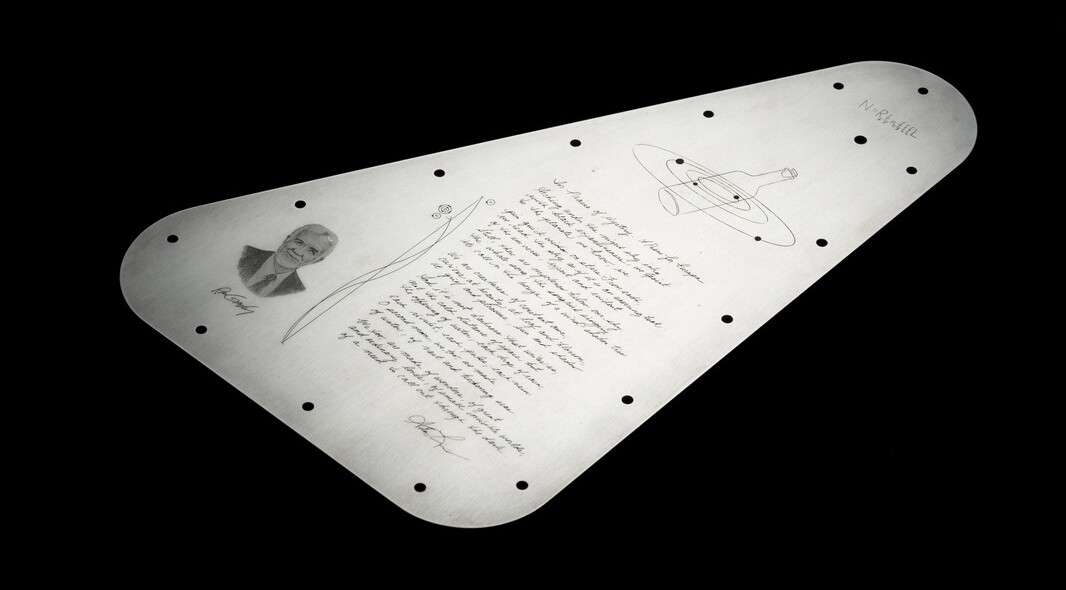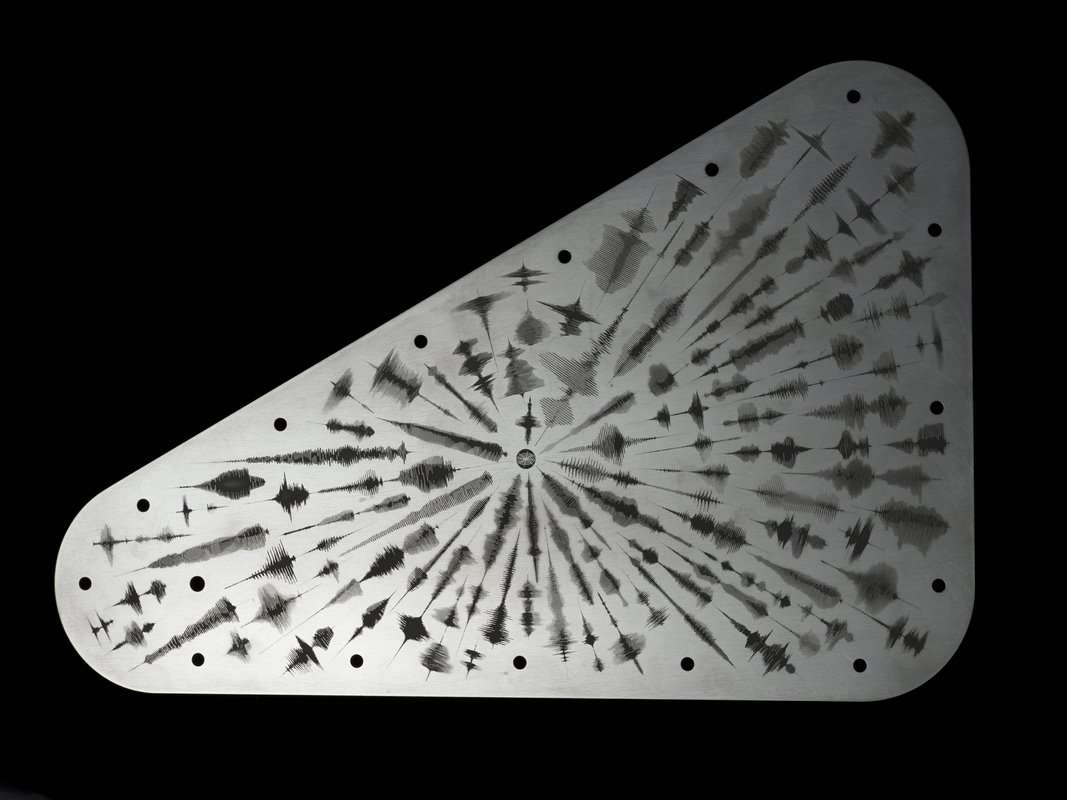Paraplegic Veteran Uses Skydiving to Reclaim Lost Sensation in His Legs and Soul
Hurtling through the air at 120 mph, Dillman doesn't need his wheelchair to skydive; he doesn't really need his legs either.

In 1977 it was a golden record, now scientists are sending a "message in a bottle" into space to communicate with aliens.
NASA's Europa Clipper spacecraft will carry a message from Earth in the form of an inscribed plaque when it launches in October, 2024, and heads toward Jupiter's moon Europa.
On one side is an engraving of U.S. Poet Laureate Ada Limón's handwritten work In Praise of Mystery: A Poem for Europa, along with a picture of a bottle bobbing in the ocean, at the center of which sits a silicon microchip stenciled with more than 2.6 million names submitted by the public.
Above the poem, the artwork also includes a longhand engraving of the Drake Equation, which was formulated by astronomer Frank Drake in 1961 to estimate the possibility of finding advanced civilizations beyond Earth.
To the left of the poem is a portrait of one of the founders of planetary science, Ron Greeley, whose early efforts to develop a Europa mission two decades ago laid the foundation for Europa Clipper, and in between these sits a visual representation of the radio frequencies considered plausible for interstellar communication, symbolizing how humanity uses this radio band to listen for messages from the cosmos.
For the other side, linguists collected recordings of the word "water" spoken in 103 languages, from families of languages around the world. The audio files were converted into waveforms (visual representations of sound waves) and etched into the plate.

Europa shows strong evidence of an ocean under its icy crust, with more than twice the amount of water of all of Earth's oceans combined, hence the choice of words.
Made of a metal called tantalum and about 7 by 11 inches (18 by 28 centimeters), this is just the most recent message NASA plans to send into space.
The Voyager Golden Records were two identical phonograph records that were included aboard the two Voyager spacecraft launched in 1977. The records contain sounds and images selected to portray the diversity of life and culture on Earth, and are intended for any intelligent extraterrestrial life form who may find them.
Also in the 1970s, the two NASA Pioneer spacecraft carried gold-anodized aluminum plaques featuring nude figures of a human male and female. The shape, color, and features of the human figures were averaged across tens of millions of images of the human face and body.

It also carried several symbols designed to provide information about the origin of the spacecraft, including a detailed map to find Earth, using radiowaves emitted by pulsars, no matter where in the galaxy the plaque is discovered.
Europa Clipper, set to launch from Kennedy Space Center in Florida, will arrive at the Jupiter system in 2030 and conduct about 50 flybys of the moon Europa.
The mission's main science goal is to determine whether there are places below Europa, that could support life. The mission's three main science objectives are to determine the thickness of the moon's icy shell and its surface interactions with the ocean below, to investigate its composition, and to characterize its geology.
The mission's detailed exploration of Europa will help scientists better understand the astrobiological potential for habitable worlds beyond our planet.
"The content and design of Europa Clipper's vault plate are swimming with meaning. The plate combines the best humanity has to offer across the universe: science, technology, education, art, and math," Lori Glaze, director of the Planetary Science Division at NASA Headquarters in Washington, said in a statement.
"The message of connection through water, essential for all forms of life as we know it, perfectly illustrates Earth's tie to this mysterious ocean world we are setting out to explore."
"We've packed a lot of thought and inspiration into this plate design, as we have into this mission itself. It's been a decades-long journey, and we can't wait to see what Europa Clipper shows us at this water world," said Project Scientist Robert Pappalardo, of NASA's Jet Propulsion Laboratory in Southern California.
SHARE NASA's Third Interstellar Message With Your Friends…
Be the first to comment